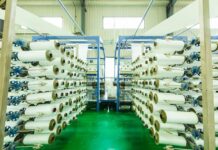Shein’s 2024 Global Circularity Study underscores a significant shift in consumer behavior, with shoppers prioritizing durability in clothing over passing trends. Conducted in partnership with Alchemer, the study surveyed more than 3,500 Shein customers aged 18 to 45 across six countries: the US, UK, France, Germany, Italy, and Poland. The findings offer valuable insights into how consumers are embracing circular fashion practices.
Focus on Durable Clothing
The results of the study revealed that over 40% of participants wear their Shein purchases more than 30 times, with nearly 20% exceeding 50 uses per article. This reflects a growing emphasis on practicality and longevity, with comfort and fit emerging as more influential than style in driving garment usage. Interestingly, lower-income customers showed a stronger tendency to wear items more than 50 times (21%) compared to higher-income shoppers (16%), highlighting the role of durability in meeting budget-conscious needs.
Growth in Circular Fashion Habits
Shein circular fashion practices are becoming increasingly common, particularly as more consumers embrace resale and other sustainable behaviors. Over half of respondents (51%) preferred digital resale platforms over traditional thrift stores. Among other practices, donating used clothing (62%) and sharing garments with friends and family (57%) were popular ways to extend the life of clothing. Moreover, 50% of participants said they actively buy or sell secondhand apparel online, showcasing the growing influence of digital transactions in the resale ecosystem.
Sustainability Drives Secondhand Market
Sustainability was a strong motivator for participation in the secondhand apparel market, with around 20-30% of consumers buying or selling pre-owned clothing for eco-conscious reasons. To support these evolving behaviors, Shein launched initiatives like Shein Exchange, a peer-to-peer resale platform operating in the US, UK, France, and Germany. Initial feedback has been promising, with 78% of users expressing satisfaction and interest in similar services becoming available locally.
The company has also collaborated with charities in multiple markets—such as the US, France, Mexico, Japan, Germany, and the UK—on programs that collect used clothing from customers and donate it to local organizations. These efforts bolster Shein’s commitment to sustainability and to promoting eco-friendly practices among its customer base.
Bridging Awareness Gaps
While enthusiasm for Shein circular fashion practices is growing, the study also highlighted barriers to participation. Roughly 30% of respondents not involved in circular fashion cited disinterest or a lack of understanding as reasons for their inactivity. Bridging these awareness gaps remains critical to broader adoption of sustainable behaviors.
Shein’s Market Evolution Amid Scrutiny
As Shein expands these initiatives, analytics firm GlobalData projects its apparel market share to increase by 0.24 percentage points, reaching 1.53% in 2024. This growth continues despite scrutiny over the brand’s labor and environmental practices. The study reinforces Shein’s efforts to address such concerns by aligning its business model with sustainability goals and responding to consumer demand for more durable and circular fashion choices.
Through its innovative programs and focus on global circularity, Shein is positioning itself as a key player in driving change within the fashion industry. By promoting both longevity and sustainability, the brand is playing a role in reducing the environmental impact of fast fashion.



































